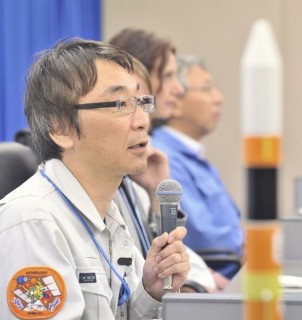Loading
Search
▼ Hayabusa-2 embarks on 5.2-billion-km adventure
- Category:Other

The Yomiuri Shimbun
Four and a half years after Japan’s first asteroid explorer Hayabusa made a miraculous return to Earth, its successor Hayabusa-2 has departed on a new space journey.
What awaits Hayabusa-2 during its 5.2-billion-kilometer, six-year mission to probe the origin of the solar system and life itself? Officials and researchers involved in its development, as well as space enthusiasts, watched its launch with high expectations on Wednesday.
“Its journey has finally started. It will surely return to Earth in six years,” said Prof. Hitoshi Kuninaka of the Japan Aerospace Exploration Agency at a press conference at Tanegashima Space Center in Kagoshima Prefecture on Wednesday night. Kuninaka is in charge of the Hayabusa-2 project.
The project aims to collect and return with samples of rocks containing water and organic substances from 1999 JU3, an asteroid that has been orbiting between Earth and Mars for six years.
Hayabusa, which made the world’s first round trip from Earth to the Itokawa asteroid, had a number of problems, including trouble with its ion engines. As a result, it could bring back only a small amount of particles from Itokawa. With that in mind, Hayabusa-2’s engine thrust was enhanced 25 percent, and improvements were made to a device to collect rock samples.
When Hayabusa-2 separated from its H2A rocket at 3:09 p.m. and was successfully put into orbit, applause erupted, and officials shook hands in a control room at the center.
“I take pride in developing a good explorer spacecraft based on the experience of the first Hayabusa, but Hayabusa-2 is just a 600-kilogram boat. We don’t know what will happen to it in the vast ocean of space,” Kuninaka said with a stern expression. “We’ve just sailed into a new sea with a new vessel. We’d like to operate it well, to make sure it returns to Earth.”
Right to the heart
About 3,100 people watched the liftoff at four observation areas set up near Tanegashima Space Center. Loud cheers arose as the H2A rocket carrying Hayabusa-2 successfully blasted off with a roar.
- December 5, 2014
- Comment (0)
- Trackback(0)

